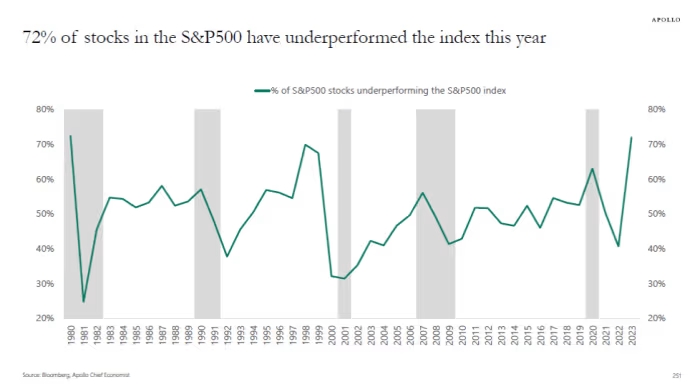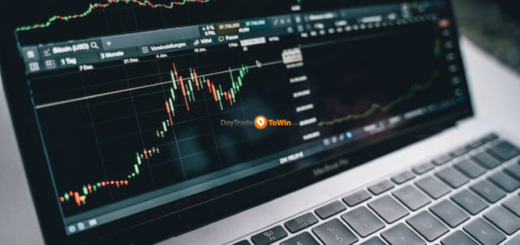2023’s Unconventional Rally: Record Numbers of S&P 500 Stocks Lag Behind
As 2023 draws to a close, the S&P 500 index is on the cusp of achieving a new record high. However, a concerning trend emerges for stock pickers, as many components of the index continue to lag significantly behind their January 2022 peaks.
This disparity has created a noticeable division in the U.S. market, leading to what Callie Cox of eToro aptly describes as “the most peculiar bull market in decades.” Callie Cox and Torsten Slok of Apollo have been closely monitoring the performance of S&P 500 members relative to the index. Slok recently highlighted in commentary that the percentage of S&P 500 underperformers is set to reach a record in 2023, currently standing at 72%.

This divergence is not a recent phenomenon. Throughout the year, discussions about “bad breadth” in the U.S. stock market have been prevalent on Wall Street. Analysts express concerns about the market becoming excessively top-heavy, with a select group of megacap stocks, known as “the Magnificent Seven,” driving nearly all of the index’s gains, fueled by the artificial intelligence boom. This exclusive group includes Apple Inc., Nvidia Corp., Tesla Inc., Amazon.com Inc., Microsoft Corp., Alphabet Inc., and Meta Platforms Inc.
This skewed performance has resulted in the S&P 500 outpacing its equal-weight counterpart by over 12 percentage points this year. As of Wednesday morning in New York, the S&P 500 had surged 24.4% in 2023, nearing its record close from January 3, 2022, at 4,777, according to FactSet data.
Conversely, the Invesco S&P 500 Equal Weight ETF (RSP), tracking the equal-weight index, recorded a modest 11.8% increase at $158.07 a share. Notably, RSP is on the verge of a “golden cross” as its 50-day moving average approaches its 200-day moving average. This development coincides with a narrowing performance gap among market laggards, with traders factoring in multiple Federal Reserve interest-rate cuts in 2024.
The Nasdaq-100 (NDX) has surpassed expectations, posting an impressive 54% surge in 2023, according to FactSet data.




